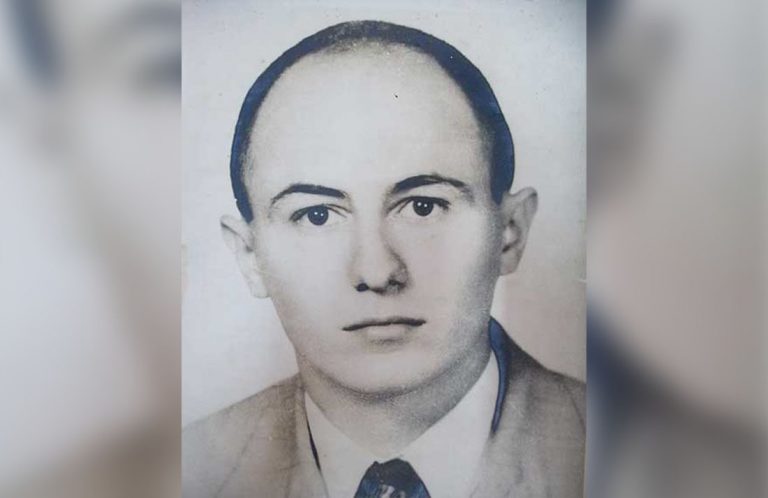Rafael Guerra Vives was part of a young generation, in terms of concept, which understood and assumed his role in history, from the leading role and responsibility that characterized it.
Guerrita, as he was called by his friends, is also one of the many fatal victims of Fulgencio Batista’s tyranny, in retaliation for his revolutionary activity.
Waking up as a revolutionary
Guerrita, born in Camagüey on November 14th, 1934 in the old Estrada Palma Street No. 219, the only son of Rafael Guerra and Zoyla Vives, had a good education. At the age of seven he entered the Champagnat College. There he attends up to the third year of high school. While he finishes his secondary level studies at the Secondary School, graduating on November 22nd, 1952.
Precisely in those last two years of study, he began his participation in multiple activities, as well as contact with revolutionary groups, which would influence his future actions.
Since his arrival as a student at the University of Havana, first at the School of Pharmacy and then at the Faculty of Agronomy, he was linked to student political struggles. He was a friend of Machadito, Juan Pedro Carbó, José Antonio Echeverría, Faure Chomón. There he also became acquainted with Álvaro Barba and Fructuoso Rodríguez.
As part of the July 26th Movement, he carried out tasks of great complexity and risk, which he fully accomplished. One of them was to place firecrackers with three comrades in different parts of the capital on January 6th, 1958. He also joined the ranks of the Revolutionary Directorate.
Disappearance and death
His intense revolutionary activism caused the repressive bodies to follow in his footsteps until on August 2nd, 1958, he was captured at “El Faro” cafe, located on Infanta Street between San Rafael and San José. One of the versions of the story says that he was on a date with his girlfriend Elena. While he was waiting for her, a group of persecutors arrives comprised by Colonel Esteban Ventura Novo, known as The Hitman in a white suit, and Miguel Rodríguez Lazo, nicknamed “Miguelito the boy”, a traitor of the young revolutionaries.
Upon learning of his disappearance, his parents along with two of his nieces searched for him for three days at the 16 police stations in the capital. During these days they checked more than 60 bodies of young people. Their investigation led them to Ventura Novo himself, who denied knowing his whereabouts.
In the refrigerators of the morgue in Havana, on Tuesday, August 5th, they found, among other bodies, that of his son. The signs of torture were evident: he was missing fingernails and toenails, he had fractured ankles, burned feet and a prominent fracture of the lower jaw, multiple bruises were observed on his abdomen, while his back was totally marked with numerous stab wounds, his eyes were gouged out and his occipital region was destroyed, in addition to being castrated.
The horrible crime committed at the Ninth Police Station located on Zapata and C streets, in Vedado, was to make him talk because they knew that he had extensive information and knowledge about the work of other colleagues and clandestine actions. But he preferred death to betrayal.
Although found by his family that day, his body was actually thrown with the genital organs inside his mouth, on the steps of a family building on Virtudes Street No. 619, at dawn on August 4th; macabre action that tried to humiliate him, even after death.
His parents decided to take his remains to his hometown where he was veiled on the 6th of the same month. At all costs they wanted to avoid making the crimes committed public, so a policeman was placed in the mortuary house so that the coffin could not be opened. However, due to an oversight, when he went out to smoke, a friend of the family, carrying a camera, took the photo that shows the barbarism committed.
Rafael Guerra Varona and Zoyla Vives did not know until after his death the important and active militancy of him, both in the M-26-7 and in the Revolutionary Directorate.
Today in the midst of the plans of the North American government to undermine and overthrow the Cuban Revolution, the death of Rafael Guerra Vives reminds us that all the blood spilled was not and should not be in vain and that the Homeland will never forget its heroes and martyrs.
Bibliography
Fraga, Guerra, Octavio. Rafael Guerra Vives, Guerrita. Crónicas de un instante. Cuba Sí newspaper, dated Thursday July 29th, 2021.
Historical Investigations Section of the Provincial Committee of the PCC Camagüey. Biographical synthesis of martyrs from Camaguey (1953-1967). Published in the Commercial Printing factory, Camagüey.
Information provided by workers of the Jesús Suárez Gayol Museum.
Translated by: Aileen Álvarez García






